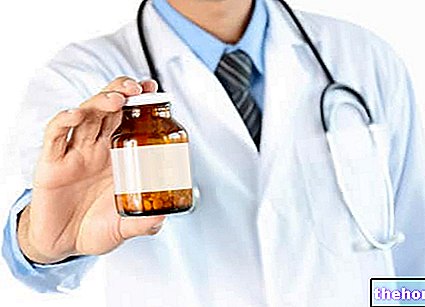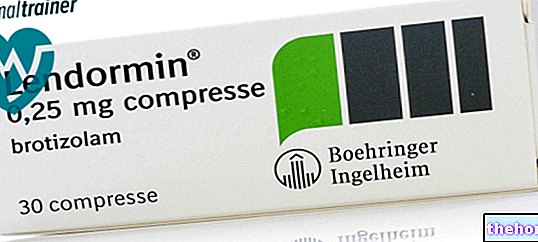Active ingredients: Ketoprofen
FASTUM 2.5% Gel
Why is Fastum Gel used? What is it for?
WHAT IS IT
FASTUM 2.5% GEL belongs to the category of anti-inflammatory and antirheumatic drugs.
WHY IT IS USED
FASTUM 2.5% GEL is used for the local treatment of painful diseases of the osteo-articular and muscular apparatus of rheumatic or traumatic origin: bruises, sprains, muscle strains, stiff neck, lumbago
Contraindications When Fastum Gel should not be used
Known hypersensitivity reactions (such as symptoms of asthma, allergic rhinitis, urticaria) to the active substance (ketoprofen) or to any of the excipients or other related substances, such as fenofibrate, tiaprofenic acid, acetylsalicylic acid or other NSAIDs.
Previous photosensitization reactions.
Do not use the product if you have a history of allergy to ketoprofen, tiaprofenic acid, fenofibrate, UV sunscreens or perfumes.
Ketoprofen gel should not be applied near open wounds or continuous lesions of the skin, or in the periocular area, nor on skin areas with alterations such as dermatosis, acne or eczema.
The product is contraindicated during the third trimester of pregnancy.
Do not expose the treated areas to sunlight or UV lamps from the solarium for the duration of the treatment and in the two weeks following its interruption.
Precautions for use What you need to know before taking Fastum Gel
Immediately discontinue the use of FASTUM 2.5% GEL if skin reactions occur including those that develop following the concomitant use of products containing octocrylene (octocrylene is an excipient present in various cosmetic and hygiene products personal such as shampoo, aftershave, shower and bath gels, skin creams, lipsticks, anti-aging creams, make-up removers, hair sprays, used to prevent their photodegradation).
The use, especially if prolonged, of products for topical use, can give rise to sensitization phenomena or local irritation.
Interactions Which drugs or foods can modify the effect of Fastum Gel
Tell your doctor or pharmacist if you have recently taken any other medicines, even those without a prescription.
No interactions of FASTUM 2.5% GEL with other drugs have been found. However, it is advisable to carry out haematological checks in patients treated with coumarins (oral anticoagulants).
Warnings It is important to know that:
The use of large quantities of topical products can give rise to systemic effects, such as hypersensitivity and asthma
Exposure to sunlight (even when the sky is cloudy) or UVA lamps from areas treated with FASTUM 2.5% GEL can induce potentially serious skin reactions (photosensitization).
Therefore it is necessary:
- protect the treated parts from the sun with suitable clothing for the entire duration of the treatment and in the two weeks following its interruption in order to avoid any risk of photosensitization
- wash your hands thoroughly after each application of FASTUM 2.5% GEL
The treatment should be stopped immediately if any skin reaction occurs following the application of FASTUM 2.5% GEL. The treatment should not be administered longer than the prescribed time: the risk of developing contact dermatitis and photosensitivity reactions increases over time
Patients with asthma associated with chronic rhinitis, chronic sinusitis and / or nasal polyposis have an increased risk of allergy to aspirin and / or NSAIDs compared to the rest of the population.
Avoid contact with mucous membranes or eyes.
The use, especially if prolonged, of products for topical use, can give rise to sensitization phenomena or skin irritation.
Do not use occlusive bandages (gauze strip, or other material, which increases percutaneous absorption even more).
FASTUM 2.5% GEL is not addictive.
There are no supporting data regarding the safety and efficacy of ketoprofen gel in children.
Use Ketoprofen gel with caution in patients with impaired cardiac, hepatic or renal function: isolated cases of systemic adverse reactions (renal disorders) have been reported.
Pregnancy and breastfeeding (see What to do during pregnancy and breastfeeding)
It is also advisable to consult your doctor in cases where these disorders have occurred in the past
What to do during pregnancy and breastfeeding
In the absence of clinical experience with cutaneous forms and referring to systemic forms:
Pregnancy
The use of ketoprofen during the first and second trimester of pregnancy should be avoided. The use of ketoprofen is contraindicated during the last trimester of pregnancy. NSAIDs can also delay delivery.
Feeding time:
After systemic administration, traces of Ketoprofen were found in breast milk.
The use of Ketoprofen is not recommended in women who are breastfeeding. Its use should also be avoided if you suspect a pregnancy or wish to plan a maternity leave.
Ask your doctor or pharmacist for advice before taking any medicine
Driving and using machines
There are no known effects on the ability to drive and use machines
Dosage and method of use How to use Fastum Gel: Dosage
How many
Warning: do not exceed the indicated doses without medical advice.
Apply the gel, in a thin layer, on the affected skin area
In case of allergic or other skin reactions, you should contact your doctor.
When and for how long
Once or twice a day
Consult your doctor if the disorder occurs repeatedly or if you have noticed any recent changes in its characteristics.
Warning: use only for short periods of treatment
Like
Apply the gel and massage gently to facilitate its absorption. Opening the soft aluminum tube: Unscrew the cap and pierce the aluminum diaphragm with the tip of the cap upside down.
Preloading the tube with dispenser: Press the dispensing cap a few times or push the bottom of the tube forward until the gel appears; it is recommended to use it in a horizontal position.
Wash your hands thoroughly and for a long time after each use.
Overdose What to do if you have taken too much Fastum Gel
n case of accidental ingestion / intake of an excessive dose of FASTUM, notify your doctor immediately or contact the nearest hospital.
Given the low plasma levels of FASTUM 2.5% GEL applied percutaneously, phenomena of overdose can be excluded.
If you have any questions about the use of FASTUM, ask your doctor or pharmacist.
Side Effects What are the side effects of Fastum Gel
Like all medicines, this can cause side effects, although not everybody gets them
As with other medicines for cutaneous use, side effects affecting the skin may occur. Cases of allergic skin reactions and severe skin reactions have been reported during exposure to sunlight. There have also been rare reports of more serious adverse reactions, such as bullous or phylittenular eczema, which may extend beyond the area of application or become generalized.
The frequency and extent of these effects are significantly reduced by avoiding exposure to the sun, including the solarium, during the treatment and in the following two weeks.
Other systemic effects of anti-inflammatory drugs depend on the transdermal diffusion of the active ingredient and therefore on the quantity of gel applied, the surface involved, the degree of skin integrity, the duration of treatment and the use of occlusive bandages (digestive and renal effects).
The following CIOMS frequency rate is used: very common (≥1 / 10); common (≥1 / 100,
Elderly patients are particularly susceptible to the adverse events of non-steroidal anti-inflammatory drugs.
Reporting of side effects
If you get any side effects, talk to your doctor or pharmacist. This includes any possible side effects not listed in this leaflet. You can also report side effects directly via the national reporting system at https://www.aifa.gov.it/content/segnalazioni-reazioni-avverse
By reporting side effects you can help provide more information on the safety of this medicine.
Compliance with the instructions contained in the package leaflet reduces the risk of undesirable effects.
These side effects are usually transient. However, when they occur, it is advisable to consult your doctor or pharmacist.
Expiry and Retention
Expiry: see the expiry date indicated on the package
Warning: do not use the medicine after the expiry date indicated on the package.
The expiry date indicated refers to the product in intact packaging, correctly stored.
It is important to always have the information about the medicine available, so keep both the box and the package leaflet.
Medicines should not be disposed of via wastewater or household waste. Ask your pharmacist how to throw away medicines you no longer use. This will help protect the environment.
Keep this medicine out of the reach and sight of children.
- COMPOSITION
100 g of gel contain:
Active ingredient: ketoprofen 2.50 g.
Excipients: carbomer 940, ethyl alcohol, essence of neroli, essence of lavender, triethanolamine, purified water.
- HOW IT LOOKS
FASTUM 2.5% GEL comes in the form of a gel for external use.
The soft tube and the tube with dispenser contained in the package is 50 g
Source Package Leaflet: AIFA (Italian Medicines Agency). Content published in January 2016. The information present may not be up-to-date.
To have access to the most up-to-date version, it is advisable to access the AIFA (Italian Medicines Agency) website. Disclaimer and useful information.
01.0 NAME OF THE MEDICINAL PRODUCT
FASTUM 2.5% GEL
02.0 QUALITATIVE AND QUANTITATIVE COMPOSITION
100 g of gel contain:
active ingredient: ketoprofen 2.50 g.
For the full list of excipients, see section 6.1
03.0 PHARMACEUTICAL FORM
Gel
04.0 CLINICAL INFORMATION
04.1 Therapeutic indications
Local treatment of painful diseases of the osteo-articular and muscular apparatus of rheumatic or traumatic origin: bruises, sprains, muscle strains, stiff neck, lumbago.
04.2 Posology and method of administration
Apply the gel, in a thin layer, once or twice a day, on the affected skin area, massaging gently to favor its absorption.
04.3 Contraindications
Known hypersensitivity reactions (such as symptoms of asthma, allergic rhinitis, urticaria) to the active substance (ketoprofen) or to any of the excipients or other related substances, such as fenofibrate, tiaprofenic acid, acetylsalicylic acid or other NSAIDs.
Previous photosensitization reactions.
History of skin allergy to ketoprofen, tiaprofenic acid, fenofibrate, UV sunscreens or perfumes.
Exposure to sunlight, even when the sky is clouded, including UV light from the solarium, during treatment and in the two weeks following its discontinuation (see section 4.4).
Fastum 2.5% gel should not be applied near open wounds or continuous lesions of the skin, or in the periocular area, nor on skin areas with alterations such as dermatosis, acne or eczema.
Third trimester of pregnancy (see section 4.6)
04.4 Special warnings and appropriate precautions for use
Wash your hands thoroughly and for a long time after each application of the product. Do not use occlusive dressings. The use of large quantities of topical products can give rise to systemic effects, such as hypersensitivity and asthma.
Use with caution Fastum 2.5% gel in patients with impaired cardiac, hepatic or renal function: isolated cases of systemic adverse reactions (renal diseases) have been reported.
The use, especially if prolonged, of products for topical use, can give rise to sensitization phenomena or local irritation.
The treatment must be stopped immediately as soon as skin reactions occur, including those that develop following the concomitant use of products containing octocrylene (octocrylene is an excipient present in various cosmetic and personal hygiene products such as shampoo, aftershave , shower and bath gels, skin creams, lipsticks, anti-aging creams, make-up removers, hair sprays, used to prevent their photodegradation) The treatment should not be administered longer than the prescribed time: the risk of developing dermatitis from contact and photosensitivity reactions increases over time
In order to avoid the risk of photosensitization, it is recommended to protect the treated areas with clothing, during the entire period of use of the product and in the two weeks following its interruption.
Patients with asthma associated with chronic rhinitis, chronic sinusitis and / or nasal polyposis have an increased risk of allergy to aspirin and / or NSAIDs compared to the rest of the population.
Avoid contact with mucous membranes or eyes.
FASTUM 2.5% GEL is not addictive.
There are no supporting data regarding the safety and efficacy of ketoprofen gel in children.
04.5 Interactions with other medicinal products and other forms of interaction
No interactions of FASTUM 2.5% GEL with other drugs have been found. However, it is advisable to monitor patients being treated with coumarins.
04.6 Pregnancy and lactation
In the absence of clinical experience with cutaneous forms and referring to systemic forms:
Pregnancy:
During the first and second trimester of pregnancy:
The safety of ketoprofen in pregnant women has not been evaluated. The use of ketoprofen during the first and second trimester of pregnancy should be avoided.
During the last trimester of pregnancy, the use of NSAIDs, including ketoprofen, can cause cardiopulmonary and renal toxicity in the fetus. At the end of pregnancy, there may be an increase in the bleeding time of both the mother and the baby. Therefore, the use of Ketoprofen is contraindicated during the last trimester of pregnancy. NSAIDs can also delay delivery.
Feeding time:
After systemic administration, traces of Ketoprofen were found in breast milk. The use of Ketoprofen is not recommended in breastfeeding women.
04.7 Effects on ability to drive and use machines
There are no known effects on the ability to drive and use machines.
04.8 Undesirable effects
Like all medicines, Fastum 2.5% gel can cause side effects, although not everybody gets them.
As with other medicines for cutaneous use, side effects affecting the skin may occur. Localized skin reactions (e.g. erythema, itching and burning sensation) have been reported which may subsequently extend beyond the application area and, in some cases, be severe and generalized (e.g. bullous or phylittenular eczema), as well as reactions of hypersensitivity and dermatological reactions (photosensitization).
The frequency and extent of these effects are significantly reduced by avoiding exposure to the sun, including the solarium, during the treatment and in the following two weeks.
Other systemic effects of NSAIDs: these depend on the transdermal diffusion of the active ingredient and therefore on the amount of gel applied, the surface involved, the degree of skin integrity, the duration of treatment and the use of occlusive bandages (digestive and renal effects) .
The following CIOMS frequency rate is used: very common (≥1 / 10); common (≥1 / 100,
Elderly patients are particularly susceptible to the adverse effects of non-steroidal anti-inflammatory drugs.
Reporting of suspected adverse reactions
Reporting of suspected adverse reactions occurring after authorization of the medicinal product is important as it allows continuous monitoring of the benefit / risk balance of the medicinal product. Healthcare professionals are asked to report any suspected adverse reactions via the national reporting system. "address https://www.aifa.gov.it/content/segnalazioni-reazioni-avverse.
04.9 Overdose
Given the low plasma levels of percutaneously applied ketoprofen, phenomena of overdose can be excluded.
05.0 PHARMACOLOGICAL PROPERTIES
05.1 Pharmacodynamic properties
Pharmacotherapeutic group: non-steroidal anti-inflammatory drugs for topical use
ATC code: M02AA10
Ketoprofen, in a suitable excipient, reaches the inflammatory foci transcutaneously, allowing the local treatment of painful affections of the joints, tendons, ligaments and muscles.
05.2 Pharmacokinetic properties
Maximum blood concentrations are reached within 2 hours after oral administration of a single dose.
The plasma half-life of ketoprofen varies from one hour to 3 hours; the binding with plasma proteins is 60-90%. Elimination occurs essentially via the urine and in conjugated glucuronide form; approximately 90% of the administered amount is excreted within 24 hours.
On the other hand, absorption through the skin is very poor. In fact, the application of 50-150 mg of ketoprofen percutaneously determines plasma levels of the active principle equal to 0.08-0.15 mcg / mL after about 5-8 hours from application. .
05.3 Preclinical safety data
In animal studies, no embryopathic effects were shown, while there is no epidemiological evidence of the safety of ketoprofen in human pregnancy. Preclinical and clinical studies performed with ketoprofen gel have not shown the occurrence of serious adverse events, although anecdotal cases of systemic adverse reactions have been described.
06.0 PHARMACEUTICAL INFORMATION
06.1 Excipients
carbomer 940, ethyl alcohol, neroli essence, lavender essence, triethanolamine, purified water.
06.2 Incompatibility
Not relevant.
06.3 Period of validity
5 years
06.4 Special precautions for storage
This medicine does not require any special storage conditions.
06.5 Nature of the immediate packaging and contents of the package
Soft aluminum tube, internally treated with non-toxic epoxy paints.
Pipe with dispenser (mechanical pump without propeller gas) consisting of a cylindrical polypropylene container, a polyethylene piston (pump), a polyacetal valve (on the dispensing cap) and a polypropylene cap.
Each pack contains 50 g of product.
06.6 Instructions for use and handling
Opening the soft aluminum tube: unscrew the cap and pierce the aluminum diaphragm with the tip of the cap upside down.
Preloading the tube with dispenser: press the dispensing cap a few times or push the bottom of the tube forward until the gel appears; it is recommended to use it in a horizontal position.
07.0 MARKETING AUTHORIZATION HOLDER
A. Menarini Industrie Farmaceutiche Riunite s.r.l. - Via Sette Santi 3, Florence.
08.0 MARKETING AUTHORIZATION NUMBER
FASTUM 2,5% GEL: 50g tube AIC n. 023417037
FASTUM 2,5% GEL: 50g tube with AIC dispenser n. 023417114
09.0 DATE OF FIRST AUTHORIZATION OR RENEWAL OF THE AUTHORIZATION
Date of first authorization: 22/12/78 (tube); 19/3/01 (tube with dispenser).
Date of last renewal: May 31, 2010
10.0 DATE OF REVISION OF THE TEXT
AIFA Determination of 29 August 2013




























